15 Things You Didn't Know About Opossums
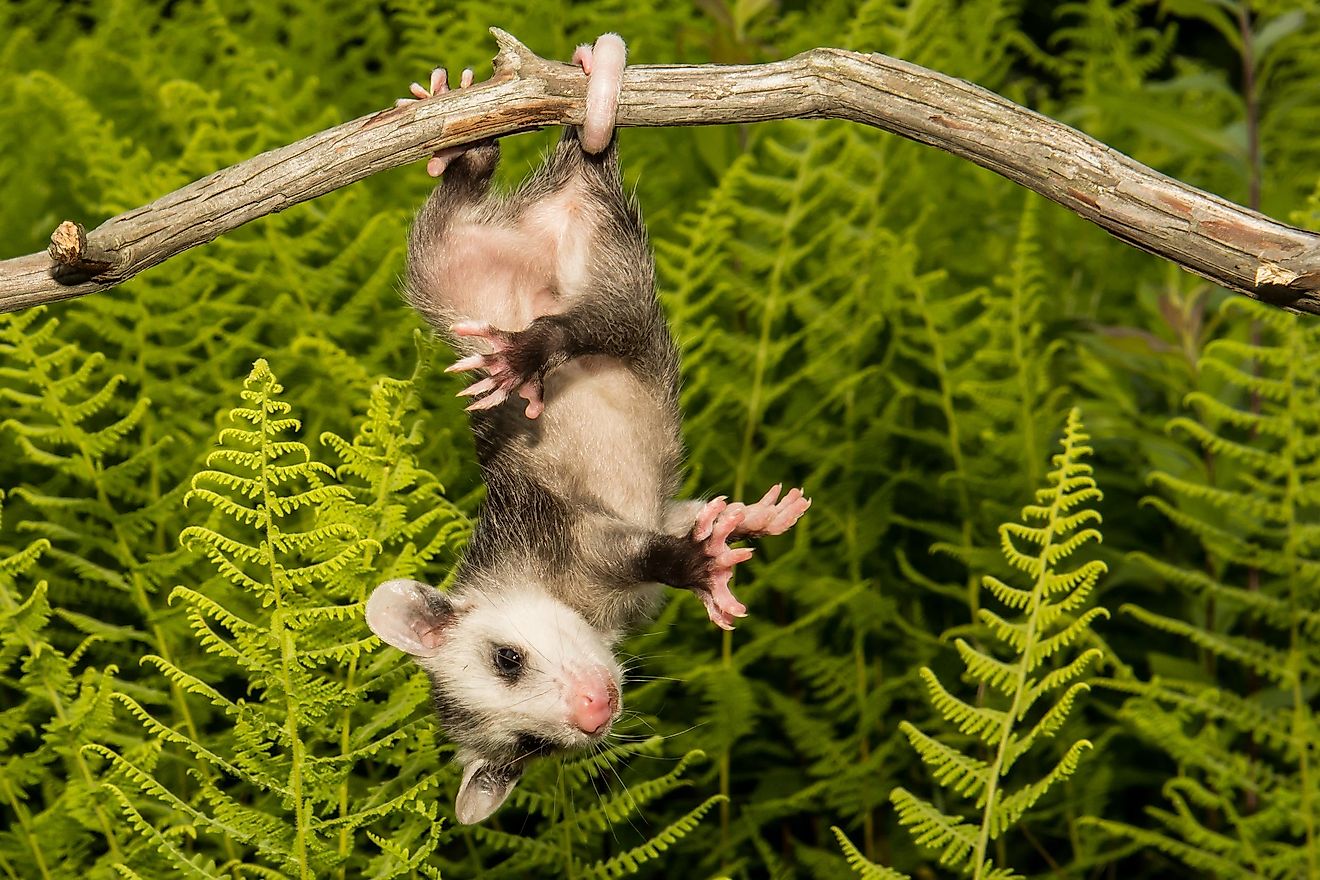
Let us clarify first: while the terms used for possums and opossums are remarkably similar, they are, in fact, different animals. Possums are the animals of the Australian origin. The ones you can meet in North America - and memes - are Opossums. We know it can be confusing: Google Images show you opossums when you search "possum," and it is very common to call the North American animal "possum." The opossums, the misunderstood North American marsupials, are the heroes of this article.
15. How Many Different Opossums Are There?
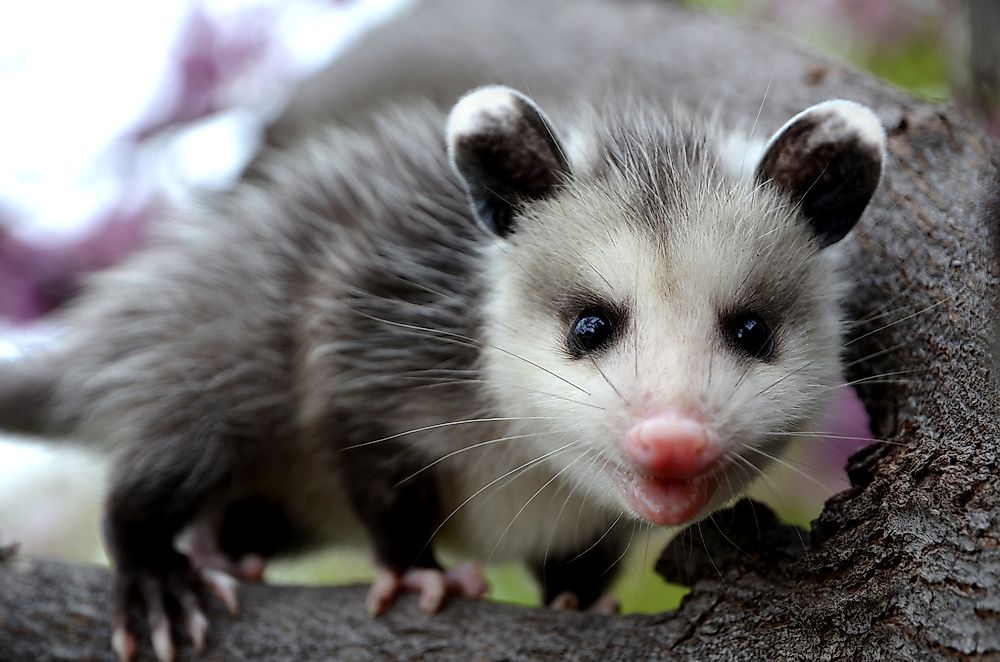
The opossum is not just one species, but over a hundred of different ones in the order Didelphimorphia. However, in the United States and Canada, you normally encounter only one: the Virginia opossum. Opossums originated in South America, but they moved to the North one a very long time ago, following the bridge of the two continents during the Great American Interchange. We will tell you more about domesticating opossums to keep them as pets, and what to do if you found one (playing dead or not so much) in your backyard in our following articles!
14. Are They Related To Rats?
Either opossums or possums are not a rodent, so they are not related to mice or rats. Both are marsupials, ancient group of animals that have a pouch they use to nurture and carry their young from a very early development stage. Their marsupial cousins are, in fact, not rats but koalas and kangaroos. Opossums can eat rats or mice if they can catch them.
13. Why Do Opossums Look Kind Of Similar To Rats?
We know that their faces and tails remind some people of rats, especially if encountered in dim light and running fast. In evolutionary biology, the independent development of somewhat similar features in response to similar environmental challenges is called "good move." Muzzle shape is useful for detecting the direction of the scent and sniffing out bugs under the soil. Tails that look scaly are not too sleek, they do not collect dirt and moisture when digging the ground, and are an excellent adaptation for balancing and climbing.
12. How Do Opossums Care For Their Pups?
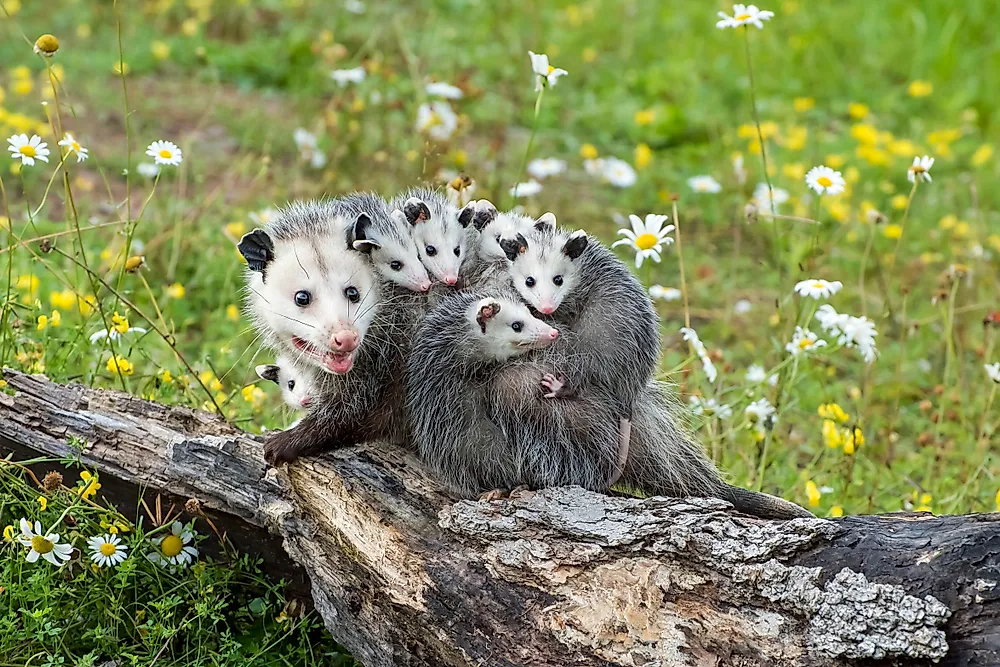
Like in other marsupials, babies are born underdeveloped, almost fetal stage. They will crawl into the pouch and continue their development there. The pups grow rapidly, but even after they are ready to leave the pouch, the mother will not leave them behind and will carry them on her back while she scavenges for a meal for about 100 days. When not on the female's back, or holding her tail, they keep in touch by communication through bird-like sounds, clicks, and lip-smacking sound.
11. What Are The Dangers That Opossums Face?
Opossums are naturally not long-living animals. Their natural life span is only two to four years. Being hit by vehicles, especially at night, is the most common threat: with all their adaptations, opossums are not road-smart. Humans also hunt and trap them for food or to get rid of it. Virginia opossums have many predators: prey birds, owls, domestic dogs, coyotes, red foxes, raccoons, bobcats, and large snakes.
10. Are Opossums Dirty Animals?
Thanks to their acting-and-smelling-like-a-corpse custom, opossums have a reputation of an unsanitary animal. But they take their cleanliness seriously: they use their tongue and paws to groom themselves frequently and thoroughly, just like house cats. Possums lack sweat glands, and this behavior is believed to help them cool down. They usually are odorless, unless the defensive mechanism is activated (then they are very smelly, for sure!).
9. How Smart Are Opossums?
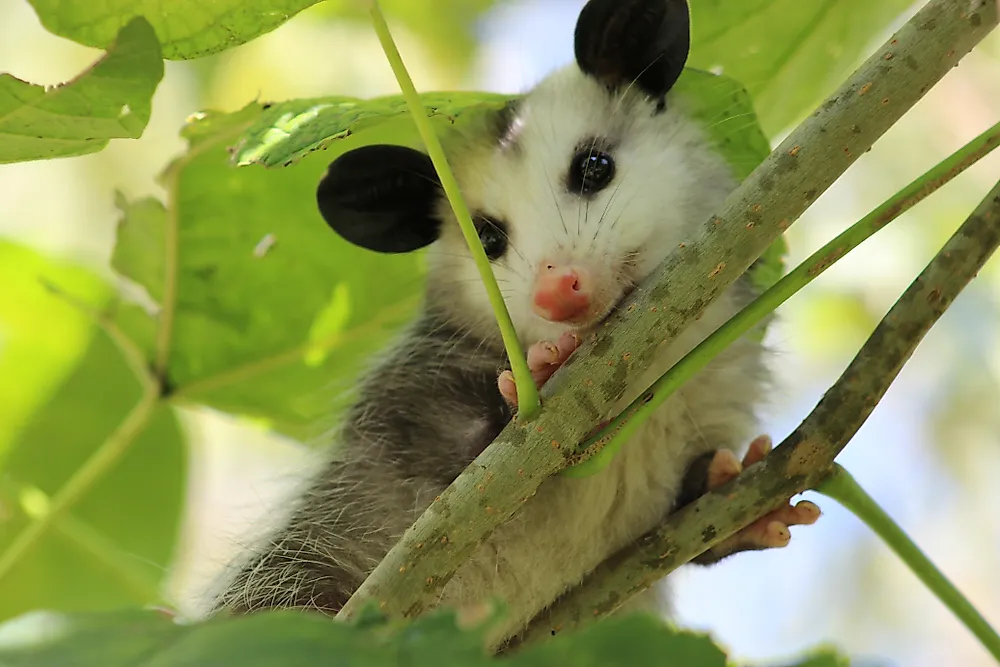
Opossums have many adaptations that made them successful survivors in diverse environments and conditions: they even have opposable digits that act like thumbs. They have impressive memories when it comes to food: better than rats or dogs. They can also recall the smell of toxic substances up to a year after trying them. In nature, they would live in dens or tree holes. They discovered the benefits of living side-by-side with humans very fast, so they sometimes lodge in barns, sheds, or under houses.
8. How To Tell Is Opossum Is Dead Or Playing Dead?
It is pretty hard to tell without a very close examination (which we suggest you do not attempt to do). Some people would inadvertently kill the animal that "plays dead" by throwing them into a pit, garbage bin, or enclosed trash bag where they suffocate. It is better to place it in some remote place with the open exit. The animal will typically regain consciousness after a period of a few minutes to four hours and escape quietly on its own.
7. What Does It Mean To "Play Possum"?
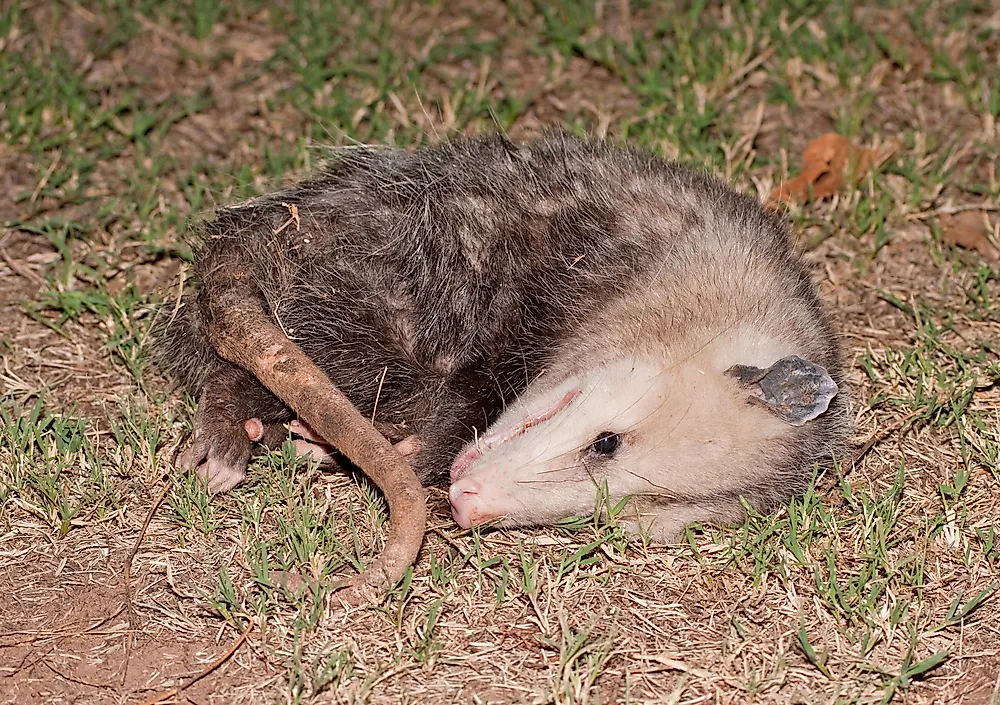
That is the very type of defensive mechanism that gave the Opossums their bad reputation. When scared or threatened, they "play possum," simulating the appearance and smell of a sick or dead animal. Yes, the smell! A foul odor helps to "sell the act." The performance is very convincing: the lips are pulled up, baring the teeth, their saliva is foaming around the mouth, the eyes are closed or half-closed, and a foul-smelling secrete is discharged from the anal glands. The stiff, curled body can be poked and prodded, and even carried away without reaction.
This mechanism evolved in response to their natural predators: foxes, bobcats, and other. They would get put off by a putrid-smelling, looking as if it died of sickness, possibly toxic corpse.
The interesting part is that physiological response is involuntary (like fainting), and it is triggered when nothing else works automatically, rather than as a conscious act they can control. The brain of baby opossums also sometimes fail to react this way at the appropriate moment: they often can not "play dead" when threatened.
6. How Come Opossums Can Fight Off Snakes?
These animals consider snakes a good meal. While they would prefer a dead or weak one, they would also take down a live one. They are resistant to the venom of nearly every type of snake found in their native range: they take down even rattlesnakes and copperheads.
Researchers have been trying to uncover opossums' antivenom adaptation for decades. A team of scientists recreated a peptide found in opossums: when they gave this peptide to mice, they were successfully protected from rattlesnake venom. More research is needed, but that is still a remarkable contribution.
5. Why Do So Many People Think Opossums Carry Rabies?
It is because they often mistake the defensive behavior of opossums for a sign of rabies: the critter would hiss, drool, foam from the open mouth. The pupil dilation is helping nocturnal animals to see in poor light.
4. Do Opossums Carry Lyme Disease Or Rabies After Eating All Those Gross Things?
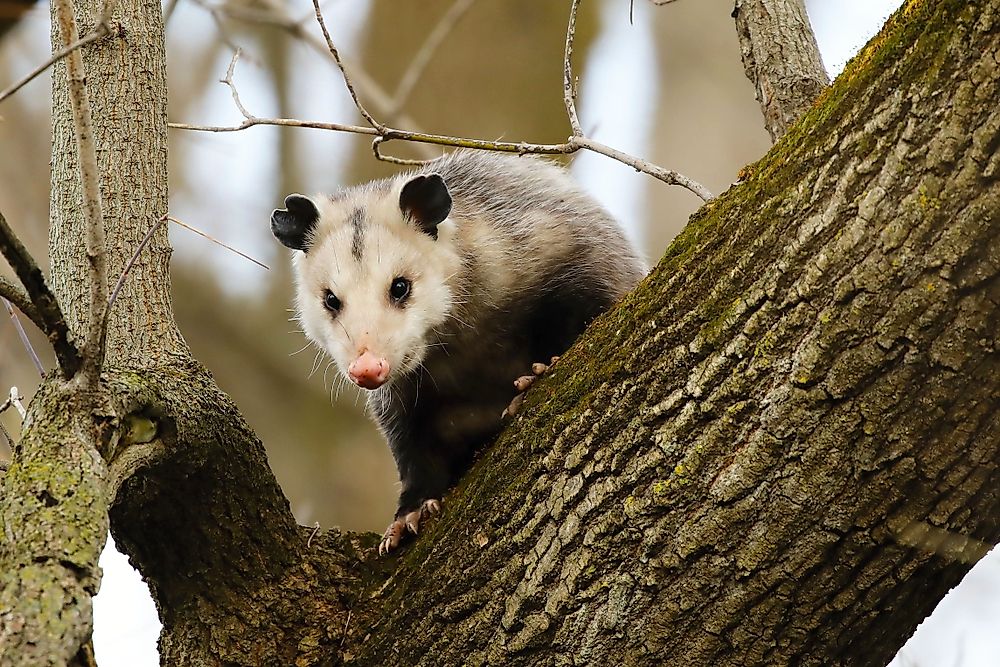
These remarkable critters are immune to a lot of things! They evolved to have such an incredible immune system to survive their diet. So they do not carry Lyme disease.
What about rabies? While no wild animal is entirely immune to rabies and a few cases of opossums with it have been documented, finding one with the disease is extremely rare. Marsupials like opossums have a lower temperature compared to other types of mammals in North America, making their bodies a less suitable environment for the rabies virus.
3. Do Opossums Help To Get Rid Of Ticks?
Their habit of eating disease-carrying ticks and dead stuff is beneficial, as it keeps the environment cleaner and the ticks numbers under control. Scientists now know that one opossum can eat 5,000 ticks in one tick season, indirectly protecting other animals (and us) from tick-borne diseases like Lyme disease. The more opossums are in the area, the fewer ticks there will be. They even groom out and eat ticks that attach to them (handy!).
2. What Do Opossums Eat?
Their teeth structure is different from rats or mice as a response to a highly flexible diet. They are not as suitable for shelling grains and nuts.
Opossums are night roamers, they find and consume all types of insects, bugs, snails, worms, smaller snakes, mice, rotting dead stuff, fallen fruits. Despite the urban legend, there have been very few cases when they would try and steal a chicken. But they would be glad to clean up the dog or cat food left outside, or the leftovers from your picnic.
1. Do Opossums Really Sleep Hanging On Their Tails?
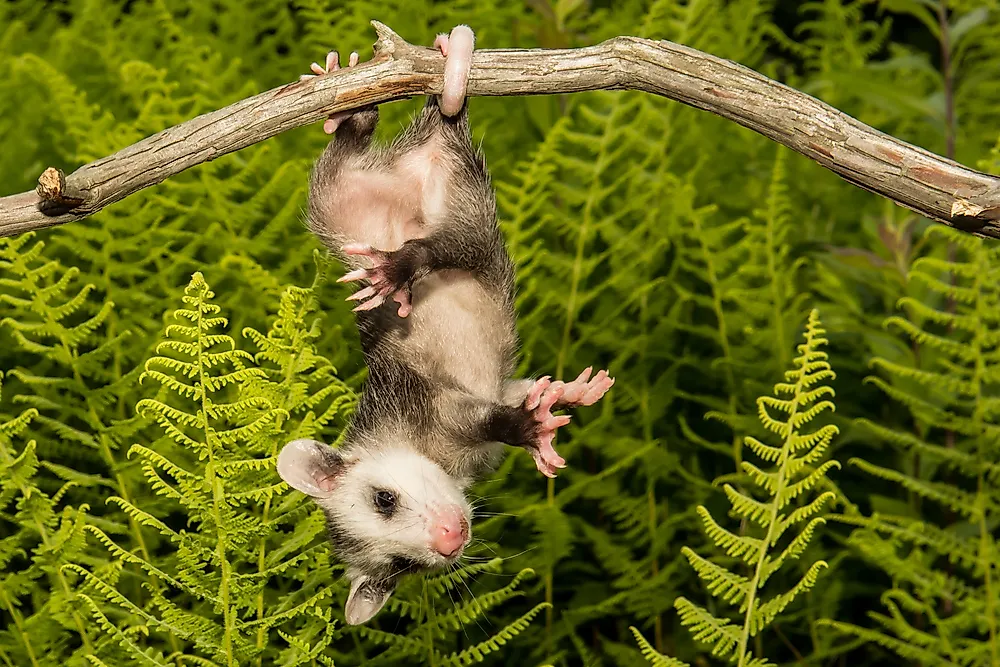
Their tails, called prehensile, are more functional than rats' ones: they can perform tasks of an extra arm, similar to those of some monkeys'. Grip branches, collect leaves and sticks for nests, even support babies. Young opossums can use their tails to hang from branches upside down. However, they do not sleep that way: it is just a myth. Their tails can only support them for a short time.











